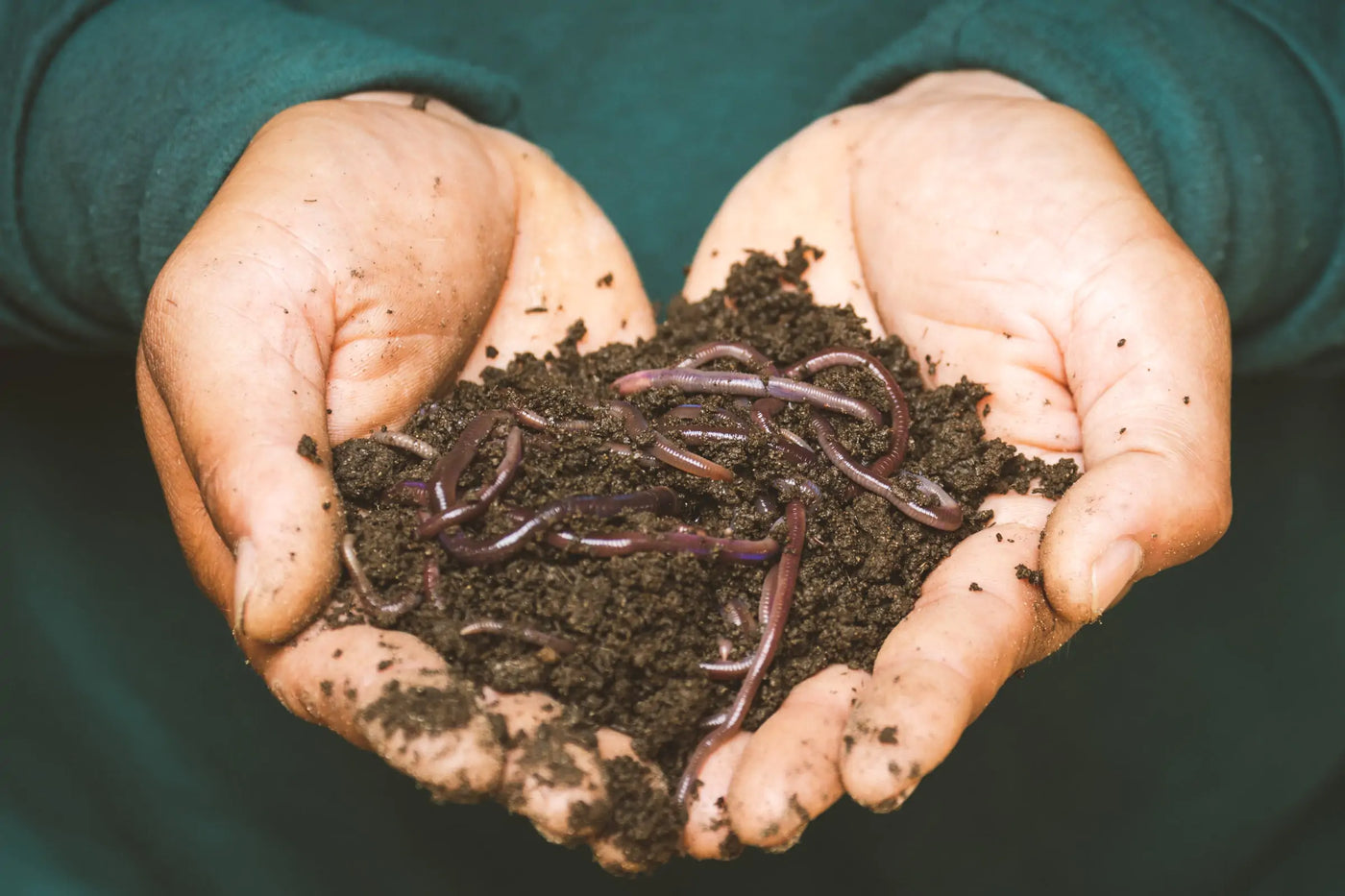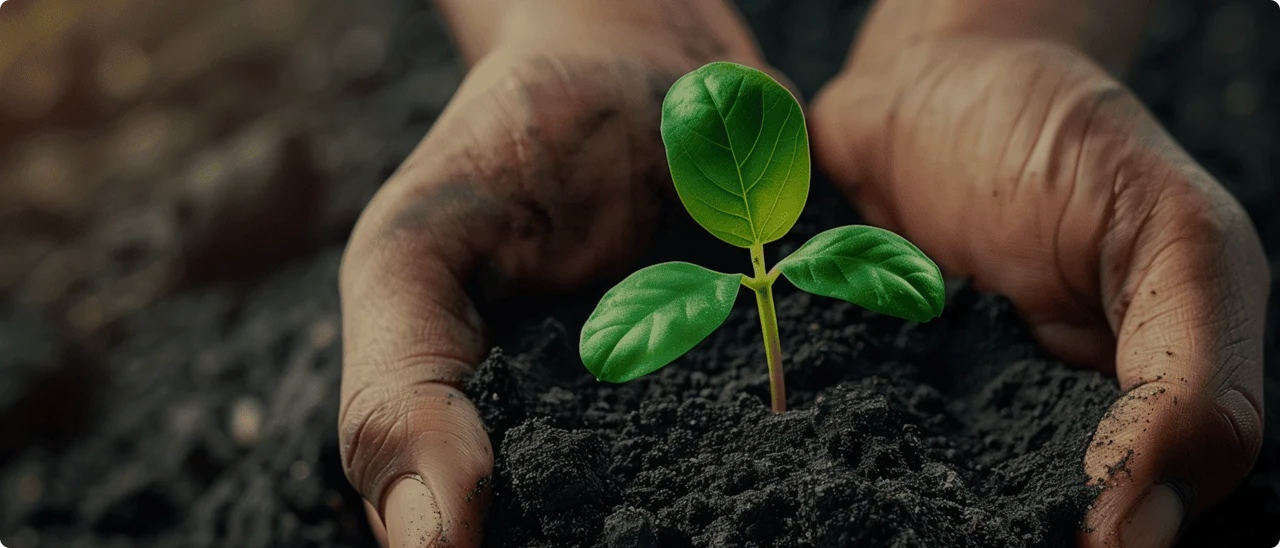Worm castings (also called “vermicast,” “vermicompost,” or, more simply, worm poop) are extremely nutrient-rich, far outpacing conventional fertilizers (and even organic compost) in terms of effectiveness. As worms digest the material they consume, they break down complex nutrients, making them more bioavailable for plants. When worm castings are added to soil, it provides valuable nutrition and enhances overall soil health and structure. Moreover, worm castings are an extremely gentle form of fertilizer, essentially working as time-released nutrition capsules which prevents fertilizer burn. This means using worm castings as fertilizer is a move every plant-grower should consider.
But can you use worm castings in a hydroponic system without soil to distribute it into? The short answer is yes! There are a few extra steps involved, but without a doubt worm castings in a hydroponic system can be extremely beneficial and enhance the overall health of your plants.
Worm Castings in Hydroponics
How can you integrate worm castings in hydroponics without soil? Unfortunately, it’s not as simple as sprinkling the worm castings into your hydroponic system directly via water or the grow medium you happen to be using, as it is in more conventional soil-based systems, but it is *almost* as easy. Using worm castings in hydroponics requires you to make what’s colloquially called worm tea, a solution made from soaking the castings in water for an extended period of time, and then applying it to your hydroponic system - either into the root water or grow medium. It can also be applied directly to the leaves of your plants as a foliar spray. With just an extra step or two it’s that simple to have a robust worm casting hydroponic system.
Nutrients in Worm Castings
Are worm castings a complete fertilizer? Absolutely! They contain the three most important elements for plants in abundance: nitrogen, phosphorus and potassium (along with other essentials such as iron, calcium and sulfur). When buying worm castings, such as Wiggle Worm Pure Worm Castings or Royal Gold Worm Castings, the ratio of the three (the NPK ratio) can often be found on the label. The ratios can range from the straightforward (1:1:1) to the more specialized (e.g. 5:5:3). The exact nutrient content of the castings will depend on what the worms eat (shocker, I know), but generally castings contain 4%-5% more nitrogen than in normal soil. Some stats peg this number even higher, and some may question whether worm castings are too high in nitrogen. It’s important to remember, however, that all the nutrients in the castings lie within a time-release structure created by the worm’s digestive process.
This makes it such that over-application of worm castings or worm tea is very difficult, and your plants will keep that healthy green glow rather than decay into dry, yellowish leaves (a common problem with traditional fertilizers). Studies have shown that worm castings in hydroponics leads to a higher growth rate and higher average leaf size, so rest assured your plants are getting the nutrients they need, when they need it.
How to Make Worm Tea and Use Worm Castings in Hydroponics
Worm tea is exactly what it sounds like - water (preferably rain water, leaves and all, but tap water will do) that has worm castings steeped in it anywhere from 24 hours to a week. Specific instructions will vary, but generally speaking, you should soak a cup of worm castings for every gallon of water you use. Be sure to tie the castings in a cheesecloth or other liquid permeable sack (i.e. a worm tea bag) so you don’t have to sift out particulates that might clog or damage your hydroponic system (if you plan to simply use the tea as a foliar spray you can skip this step).
It also helps to aerate the water by mixing it consistently or using a bubbler or air stone. The constant mixing will produce a higher yield tea than leaving it stagnant and will encourage growth of healthy, aerobic microbes. What you now have is essentially worm poop concentrate, so treat your new worm tea like you would other store-bought nutrient solutions and add water until the PPM range is suitable for your needs. You’re now ready to apply worm castings to your hydroponic feeding regimen however works best for you, congratulations! Your plants will truly thrive with this nutrient-rich, all-natural worm tea hydroponic solution.
We here at Monster Gardens hope this article has given you some insight into how amazing worm castings are as a product and how using worm castings in hydroponics can enhance the health and quality of your crops. As you’ve learned, the process is relatively simple and the benefits are truly spectacular. If you’d like to learn more about how to integrate other nutrients with your new worm castings in your hydroponic system, check out: Plants Need Nutrients Too. ‘Til next time, happy gardening from Monster U, the source for all you need to know for a monster grow!


